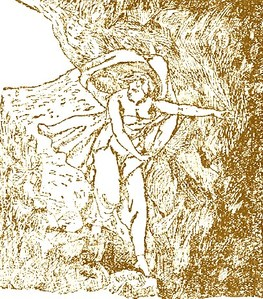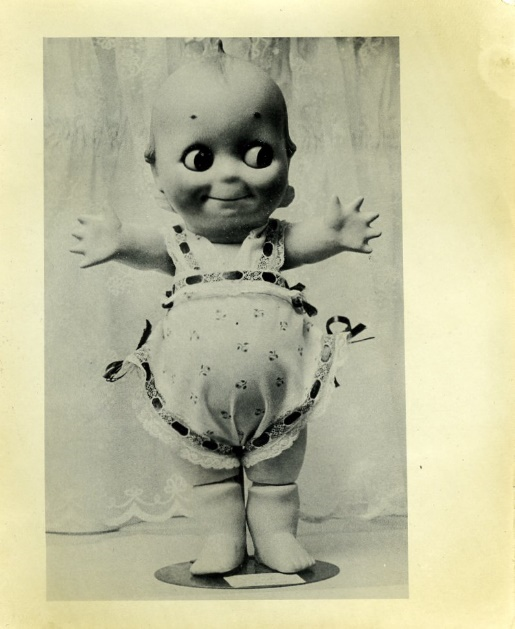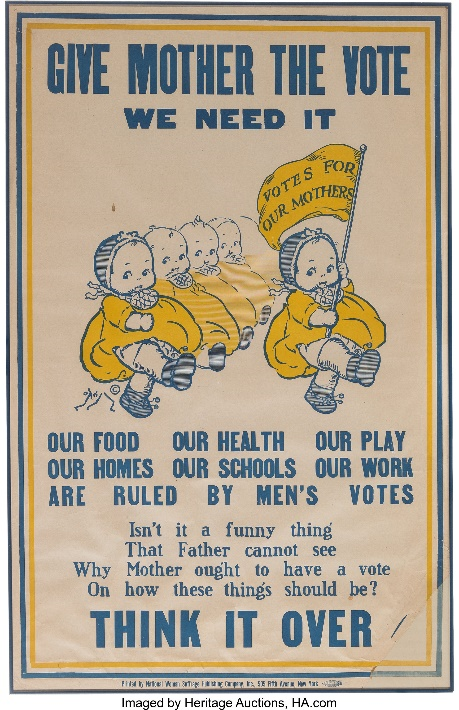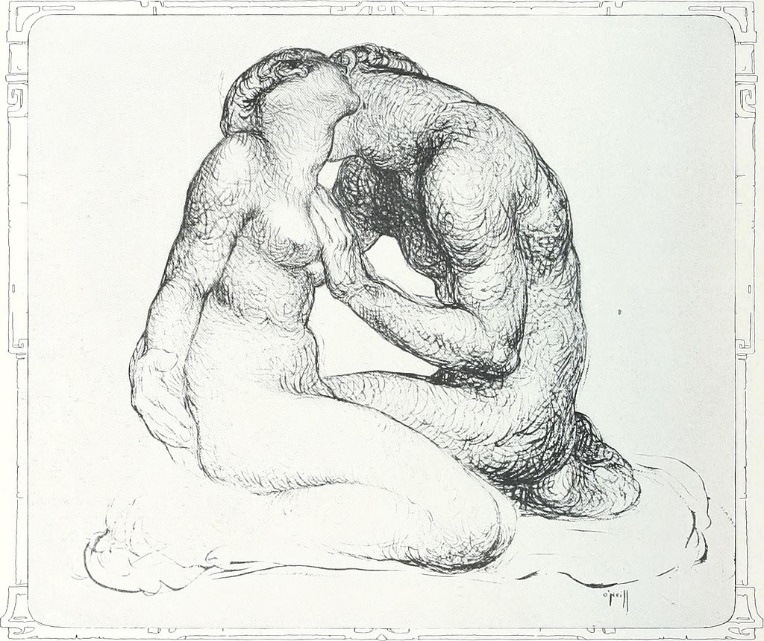Rose O’Neill was born in Wilkes-Barre, Pennsylvania in 1874. When she was a toddler, her parents moved to Battle Creek, Nebraska to try their hand at farming. Her father, William, was a classic book salesman by trade, and the farming venture was fairly short-lived. By the time she was seven, the O’Neill family had relocated to Omaha, where they would spend the next twelve years. There were seven children, and money was always tight. The family originally lived near Creighton University, but moved several times.[1]
In Omaha, Rose spent much of her free time drawing, and was largely self-taught. At the age of thirteen or fourteen, she entered a sketch called Temptation Leading down in an Abyss into a children’s drawing contest sponsored by the Omaha World-Herald. The judges couldn’t believe that someone her age could have produced a work of such quality, so she was asked to replicate certain elements for them before being named the winner.[2] As a teenager, Rose began taking drawing lessons from J. Laurie Wallace, a Realist with ties to the Art Institute of Chicago.

Temptation Leading down in an Abyss. Image source: https://hhfo-5.weebly.com/an-artist-is-born.html
At the age of nineteen, Rose moved to New York to work as a contributing illustrator for various popular periodicals like Truth, Sunday Magazine, Harper’s Bazarr, and Cosmopolitan. In 1896, she published a comic strip entitled “The Old Subscriber Calls” and became the first female comic strip artist in the United States. She joined the Puck staff in 1897 and was the only female member until 1903.[3]
The Kewpie character didn’t come about until 1909, when Rose’s career was already well-established. The little cupids first appeared in magazines, and their massive popularity led to Rose creating dolls of the characters in 1913. Rose and her sister Callista worked with New York artists to develop the dolls, which were first produced in factories in Germany, then production expanded to France and Belgium, as well. In addition to being cute little figures, they also were unfailingly kind, respectful, and loving to one another in their cartoons; these little characters were an extremely visible way for Rose O’Neill to share her world-view with her audience.

An original Kewpie doll, c. 1915. Image courtesy of the Douglas County Historical Society.
Meanwhile, Rose’s popularity was skyrocketing, and she became the highest-paid female illustrator of the day, worth $1.4 million in 1914.[4] She was an influential force in both the art world and politics. She hosted salons in her spacious New York apartment, and spent time studying in Europe, most notably with Auguste Rodin.[5] She was also dedicated to suffrage and other social causes, not hesitating to use her wealth and popularity to improve the situations of others. She firmly disagreed with the fashion trends of her day that saw women being cinched into restrictive corsets – she preferred looser-fitting robe-like dresses that were referred to as “flyin’ squirrel dresses” by natives from the Ozarks (the O’Neill family’s final home and the setting for Rose’s retirement). She also took issue with popular depictions of Black subjects in mainstream art, where they were often shown with grotesque or otherwise exaggerated features. She was one of the first illustrators to buck this trend, using the same stylization techniques for all of her characters.

Suffrage poster by Rose O’Neill. Image source: https://historical.ha.com/itm/political/posters-and-broadsides-1896-present-/votes-for-women-rose-o-neill-kewpie-poster-perhaps-the-most-sought-after-of-all-woman-s-suffrage-items/a/6181-43174.s
The production of Kewpies slowed drastically during WWI, and only regained some of their former popularity, in part because of the arrival of another cartoon – Mickey Mouse.[6] But Rose O’Neill continued producing artwork – she lived in Paris for most of the 1920’s, where she produced more “serious” work. During this time, she exhibited at the Galerie Devambez and was elected to the Société Coloniale des Artistes Français. She returned to the United States in 1927, and spent much of the rest of her life living at Bonniebrook, her family’s estate near Branson, Missouri.

“The Eternal Gesture,” Rose O’Neill. 1920. Image source: https://en.wikipedia.org/wiki/Rose_O%27Neill#/media/File:The_Eternal_Gesture,_by_Rose_O’Neill.jpg
[1] Dunbier, Lonnie. “O’Neill, Rose Cecil.” Courtesy of Museum of Nebraska Art.
[2] Rose O’Neill and Miriam Formanek-Brunell, The Story of Rose O’Neill: An Autobiography (Columbia, MO: University of Missouri Press, 1997), 44.
[3] Ibid, 16.
[4] Bossert, Jill. “1999 Hall of Fame Inductee: Rose O’Neill,” Society of Illustrators, 1999.
[5] Buhr, Sarah. Frolic of the Mind: The Illustrious Life of Rose O’Neill, 35.
[6] Dunbier, Lonnie. “O’Neill, Rose Cecil.” Courtesy of Museum of Nebraska Art.